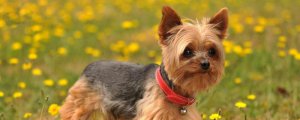Budgerigar’s breeding process
1, Although budgerigars can breed almost all year round, due to the high temperature in summer, if the parrots enter the nest to hatch continuously, it will easily affect their health, and the hatching brooding rate will also be reduced, and it is easy to hatch the poor physique. young bird. Therefore, in the summer, parrot breeding should be stopped.
2. Parrot breeding requires pairing of female and male birds first. The owner should try his best to choose 1-2 year old heterosexual birds that are robust and distantly related as breeding birds. In order to maintain the breeding of excellent breeds, it is best not to breed different types of parrots indiscriminately to prevent the occurrence of “four dissimilarities” in the offspring. If there are more parrots, the number of female birds needs to be about 5% more than that of male birds, so that they can be freely paired to prevent male birds from fighting for mates.
3. After the male and female birds are paired, the male and female birds will soon choose their own nests for mating. After parrot mating, the owner should pay attention to note the date of the mother bird laying the first egg, because the mother bird generally starts to lay eggs and hatch after laying the second egg, and the hatchlings of the chicks are mostly 18- 20 days, according to this, it is good to break off the time when the first egg hatches. At that time, owners can pay attention to inspections to screen out unfertilized eggs.
4. The mother bird is very alert in the early stage of hatching. During this period, the owner should try not to move the nest box and peep at the eggs in the nest, so as to prevent the mother bird from being disturbed and abandoning the nest .
5. Budgerigars are late-adult birds, and chicks generally begin to grow feathers 8 to 9 days after hatching. Eyes open 10 to 11 days after hatching, feathers grow about 20 days after hatching, and leave the nest about 30 days after hatching. The chicks are fed by the mother before they leave the nest. When the feathers of the chicks are basically uniform or their heads stick out of the nest, the females usually ignore the chicks except for feeding them. Preparing for a breeding.
Chicks are generally ready to leave the nest about 30 days after hatching. During the brooding period, in addition to feeding the staple food, a small amount of egg yolk is also required for feeding. After the chicks left the nest for 10 days, the chicks and mother birds were separated into cages.
6. Budgerigars can also become hand-playing birds after good training. Training budgerigars also requires training from an early age. At that time, the owner can carry out training training with the food that the bird loves to eat. Usually, the bird will take the initiative to eat from the owner’s hand when it sees the food that it likes to eat. The owner can gently stroke the bird’s back with his hand, so that after a period of training, as long as the owner stretches his hand in front of the bird, it will fly to the owner’s hand skillfully. After training to a certain level, the birds will interact with you freely.
7. Training parrots to learn tongue
Training parrots to learn tongues can generally start training when they are 2 months old. At first, teach them to say a simple word every day, such as a simple greeting. Note that when training parrots to learn tongues, they should be taught by special personnel, and it is not suitable for the whole family to train. Note: To train parrots to learn tongues, they should be trained frequently, otherwise parrots will easily forget what they have learned before.



